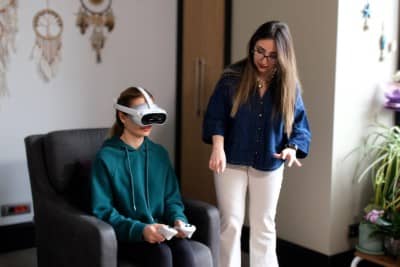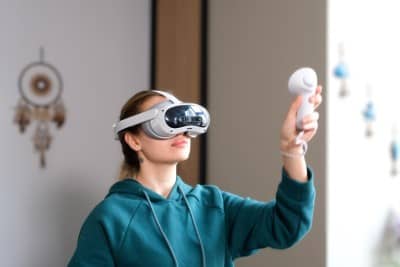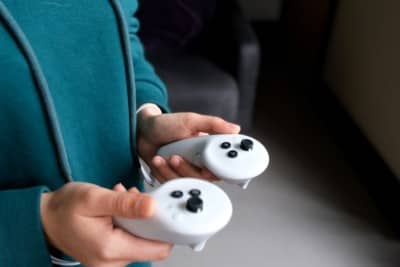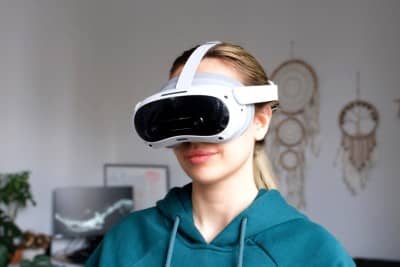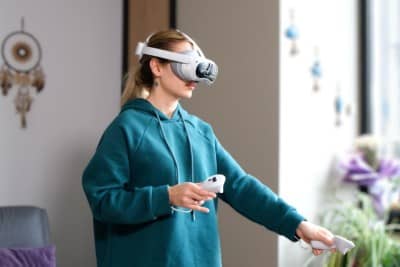- E-Magazine
Contents
Virtual Reality in Psychotherapy
Specialist Clinical Psychologist Çiğdem Demirsoy from Üsküdar University NPISTANBUL Hospital said that the virtual reality method in psychotherapy is a program widely used abroad and has started to be used in our country.
We are doing desensitization studies in imagination
Stating that successful results have been obtained with the virtual reality method, Specialist Clinical Psychologist Çiğdem Demirsoy stated that in order to effectively treat anxiety and fear, it is not enough to desensitize only by talking or imagining and said the following:
"Cognitive behavioral therapies are effective in anxiety, fear and especially phobias. In psychotherapy, it is not only to treat the person by talking to the person, but today we also benefit from the possibilities of technology. In the therapy of anxiety disorders and phobias, the thoughts and images that lead to these disorders are revealed and gradual desensitization studies are carried out. In order for the anxiety and fear to disappear completely, the person must encounter the situation that causes anxiety and fear. Until now, we have been doing desensitization work on these in the imagination. The actual passing of fear and anxiety occurs when the person is exposed to that stimulus and that situation, that is, when the person experiences it in real life. For example, there are many different methods and techniques on how to recognize one's erroneous thoughts about the fear of dogs, how to recognize the accompanying emotions and how to change them. You do this in the session room, but in real life, they cannot experience the comfort they experience in the session room. Virtual reality allows the person to experience that reality. The person experiences it in three dimensions."
Learning how to cope in real life
Stating that the virtual reality application is a time-saving method, Specialist Clinical Psychologist Çiğdem Demirsoy said, "This method provides a situation that we can control because the person manages to control his anxiety with the therapist, but when he encounters real stimuli in real life, he does not know what he will experience, so his avoidance-avoidance behaviors continue. Because people run away from uncomfortable situations, this is a natural human reaction.
However, it progresses in a safe situation. Thanks to this method, we enable them to approach the frightening situation in a safer way under the guidance of the therapist."
Anxiety-inducing stimuli are moved to the therapy room
Stating that the virtual reality method provides ease of application, Demirsoy said, "In the conditions of a city like Istanbul, it is not possible to go with our patient and take the subway, take the elevator, take the plane and be with our client all the time. With the virtual reality application, we carry the anxiety-inducing stimuli in the outside world to the therapy room and ensure the most appropriate exposure to the original."
Therefore, Çiğdem Demirsoy noted that virtual reality application is a method that supports psychotherapy and makes the person more ready for the last point before recovery,
"Because when the person can experience it in that virtual reality environment, they have taken one more step. In anxiety, when exposed to the situation that causes anxiety, anxiety increases in the person and he avoids situations that cause anxiety, and as he avoids, he ensures that the anxiety continues. The person needs to stay there for a while. This is what virtual reality provides."
It is applied together with biofeedback
Stating that they apply virtual reality application together with biofeedback, Specialist Clinical Psychologist Çiğdem Demirsoy said, "Sometimes people say that they are afraid, but their anxiety level is not very high, but it seems very high to the person. Or vice versa, they say they are not afraid, but in fact their anxiety level is elevated and they are in physiological arousal. Biofeedback also gives concrete scales of this. Thus, while the person is experiencing some virtual reality with virtual reality goggles, we watch what he sees on the screen and how he reacts physiologically to what he sees. Thus, we ensure that he/she is exposed by giving directions in such a way that he/she remains in maximum anxiety. As the person is exposed, after a while, the event we call extinction occurs and the emotion begins to decrease."
Stating that they used the biofeedback method before the virtual reality application, Çiğdem Demirsoy said, "With biofeedback, we were teaching the person to recognize and manage their own internal processes. While doing that, we were making the person experience the disturbing situation in the image. We were doing desensitization studies in fear, anxiety, obsessive-compulsive disorder, but since we cannot enter into the person's thoughts, there are escapes in thoughts. Just like escaping from taking the subway or an airplane, there are also escapes in thinking. We cannot control the escapes in thinking. Thanks to the virtual reality application, we can help the person to fully visualize
we provide," he said.
We monitor changes in a person's physiology
Stating that they are the team that brought and used the biofeedback application to our country many years ago, Specialist Clinical Psychologist Çiğdem Demirsoy explained this application as follows:
"We connect some sensors to the person. The computer embodies the changes in the person's physiology and brings them to the computer screen as visual and auditory signals. We can work on two types of systems: Autonomic nervous system and central nervous system. When we say the central nervous system, we attach some electrodes to the person's head and direct the activity of brain waves, EEG signals and visual and auditory signals to the computer. We can also monitor changes in the autonomic nervous system such as respiration, skin resistance, skin temperature and heart rhythm through a number of sensors on the screen. When we show the changes in the biological functioning of the person back to the person as feedback, the system uses it in its own regulation. Under the guidance of the therapist, people learn to recognize and control the connection between mind and body in a short time."
How is virtual reality applied?
Specialist Clinical Psychologist Çiğdem Demirsoy said the following about the application of the virtual reality method: "The person wears a pair of glasses. The person can experience himself/herself in a three-dimensional environment. The therapist observes what the person sees at that moment on the computer screen in two dimensions. By monitoring the signals from the biofeedback, they can track the increases and decreases in anxiety."


